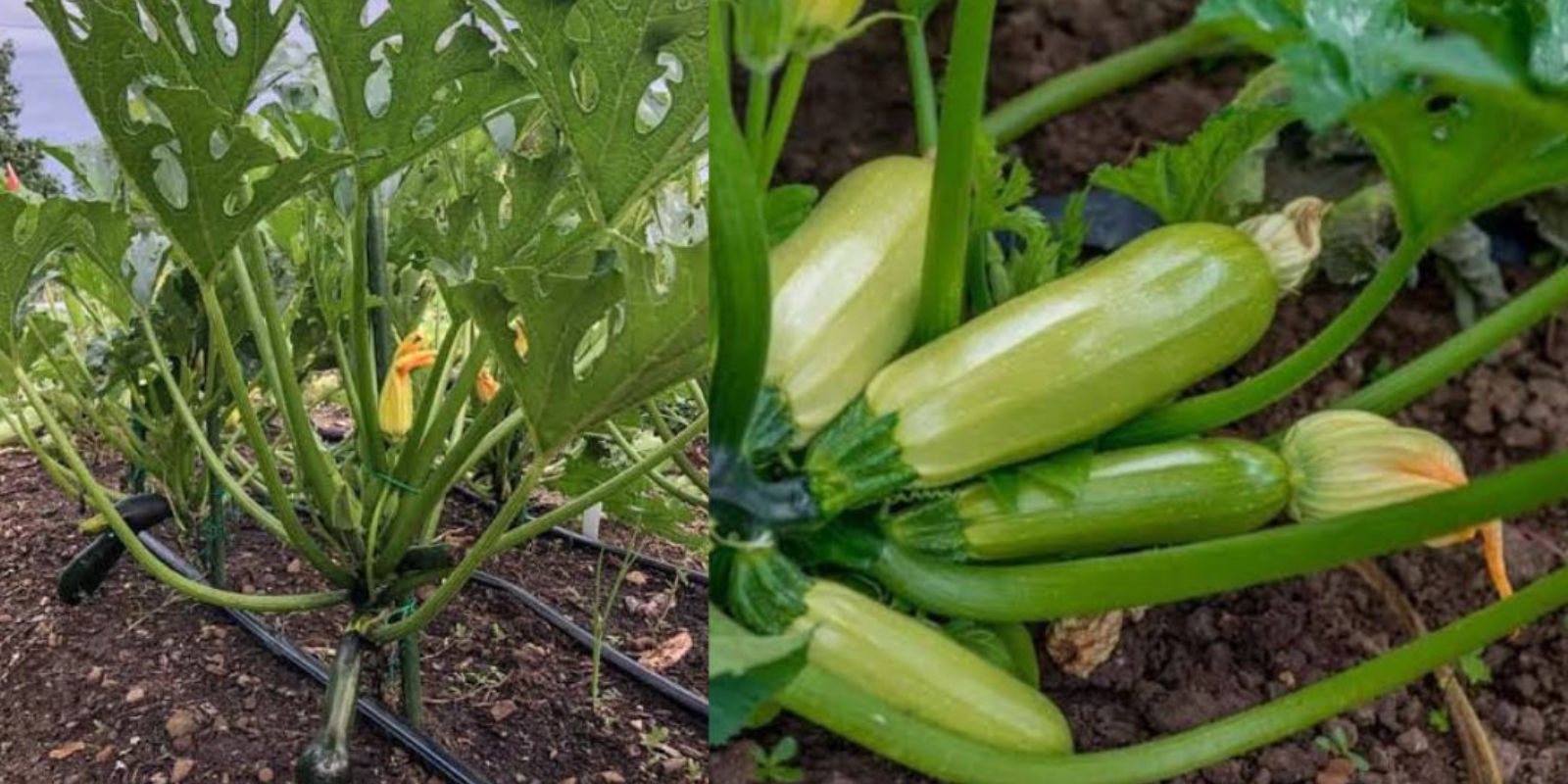Zucchini, a versatile and nutritious vegetable, is a staple in gardens around the world. Despite its popularity, many gardeners unknowingly adopt suboptimal practices, leading to limited growth, smaller yields, and less flavorful produce. But fear not—this guide will walk you through a game-changing way to grow zucchini that will leave you with healthier plants and bountiful harvests. Once you try this method, you’ll never go back!
Understanding Zucchini Growth Basics
Zucchini belongs to the squash family and is known for its vigorous growth. However, achieving its full potential requires proper soil, watering, pollination, and harvesting practices. Traditional methods often overlook key steps that can make a significant difference. By rethinking your approach, you can transform your zucchini-growing experience.
Step 1: Optimize the Soil
Healthy soil is the foundation of productive zucchini plants. Zucchini thrives in soil that is:
- Nutrient-rich: Incorporate plenty of organic matter, such as compost or aged manure, into your garden bed.
- Well-draining: Zucchini dislikes standing water. Ensure your soil is loose and drains well to prevent root rot.
- Slightly acidic to neutral: Aim for a soil pH between 6.0 and 7.5. You can test your soil and amend it if necessary.
Pro Tip: Mulch around your plants to retain moisture and regulate soil temperature.
Step 2: Switch to Vertical Growing
Traditionally, zucchini is allowed to sprawl across the ground. While this works, it can lead to:
- Crowding and disease: Overlapping leaves trap moisture, encouraging mildew and pests.
- Space constraints: Horizontal growth takes up valuable garden space.
Solution: Grow zucchini vertically by training it onto a sturdy trellis or cage.
- Use soft ties to secure the main stem to the support structure as it grows.
- Vertical growth improves airflow, reduces disease risks, and makes harvesting easier.
Step 3: Perfect the Watering Schedule
Watering zucchini the wrong way can lead to fungal diseases or stunted growth.
- Water deeply and consistently: Zucchini needs about 1-2 inches of water weekly, delivered directly to the soil.
- Avoid wetting leaves: This reduces the risk of powdery mildew. Use a drip irrigation system for precise watering.
Step 4: Hand-Pollinate for Guaranteed Success
Pollination is crucial for zucchini production. Without it, flowers fall off without forming fruit. While bees and other pollinators typically handle this, you can boost yields by hand-pollinating.
- Identify male and female flowers: Male flowers have a thin stem, while females have a tiny zucchini behind the flower.
- How to pollinate: Use a small brush or cotton swab to transfer pollen from the male flower to the female.
Step 5: Prune Strategically
Zucchini plants can become bushy, leading to overcrowded foliage. This blocks sunlight and traps moisture, creating a breeding ground for pests and diseases.
- Remove excess leaves: Focus on cutting leaves near the base or those shading flowers and fruits.
- Don’t over-prune: Maintain enough foliage to support photosynthesis.
Step 6: Feed Regularly
Zucchini is a heavy feeder and needs consistent nourishment throughout its growing season.
- Start with rich soil: Prepare your planting area with compost before planting.
- Apply organic fertilizers: Every 2-3 weeks, feed your plants with compost tea, fish emulsion, or a balanced organic fertilizer.
- Side-dress with compost: Halfway through the season, add a layer of compost around the plants to replenish nutrients.
Step 7: Harvest Frequently
Frequent harvesting not only ensures tender and flavorful zucchini but also encourages the plant to produce more.
- Pick at the right size: Harvest zucchini when they are 6-8 inches long for the best taste and texture. Larger zucchinis can become tough and seedy.
- Use sharp tools: Cut the zucchini from the plant with a sharp knife or pruners to avoid damaging the stem.
Step 8: Troubleshoot Common Issues
Even with the best practices, you may encounter problems. Here’s how to address them:
- Powdery mildew: Remove infected leaves and ensure good airflow. Use a natural fungicide like neem oil.
- Blossom end rot: Caused by calcium deficiency or inconsistent watering. Add crushed eggshells to the soil and water evenly.
- Pests like squash bugs: Remove eggs manually and spray plants with insecticidal soap.
Why This Method Works
This approach maximizes plant health and productivity by:
- Encouraging better airflow and reducing disease risks.
- Promoting efficient nutrient uptake through proper feeding.
- Boosting pollination success for higher yields.
Try It Out and See the Results!
Growing zucchini the right way doesn’t just yield more—it also produces tastier, healthier vegetables. Once you experience the difference, you’ll never return to old habits.
Have you tried growing zucchini vertically or using any of these tips? Share your experiences or ask questions in the comments below!

